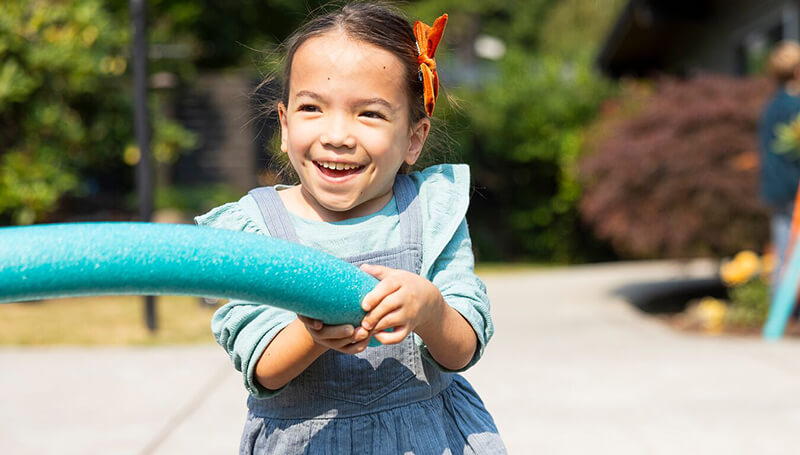Activities for Children Sick at Home
You can download this article as a PDF (English, Spanish).
Beyond TV, Video Games, Apps and the Internet

When you have a child who is sick at home, it can be tough to find things for them to do. Of course there’s always TV, video games, apps and the Internet, but it’s better to fill most of the day with other activities. We hope you find some ideas here. But first, there are a few things to remember:
Avoid choosing activities that might frustrate your child. Choose things they can do with ease when feeling well. Familiar toys and play items give a child comfort and security. When choosing new projects or toys, select ones that are geared to a slightly younger age.
Know that your child’s attention span will be shorter than normal. Plan activities that can be finished in short periods of time or can be stopped and started again easily. If your child needs to stay in bed, place a table by the bedside. Provide a large, firm surface to work on. A lid from a large cardboard box can help keep track of pieces or supplies.
Try to set regular times throughout the day to spend with your child so you can still go about your daily tasks. If your child is young, they will need your attention more often, but for shorter periods of time. If your child is older, they can manage being with you less often, but will enjoy having you stay long enough to play a game or do something together.
Help your child get started on an activity, check on progress and help with clean up. This kind of structure encourages a child to continue on their own.
Try not to insist on neatness. For messy activities, an old vinyl tablecloth can help protect your child’s bed or play area. (Do not use thin plastic bags or sheets with children under three years due to suffocation hazard.)
Activity Suggestions
Under 3 years
- Cuddling and tender loving care
- Reading/looking at books
- Coloring
- Sorting/matching toys and activities
- Music
- Play-Doh
- Easy-to-handle building sets (Duplo)
- Dolls/stuffed toys
- Activity sets or centers (such as Fisher Price Farm or Garage)
3 to 5 years
- All of the activities listed above, plus:
- Puzzles (5–25 large pieces)
- Puppets (make your own out of paper lunch sacks!)
- Painting
- Cutting and pasting
- Dramatic/imaginative play ( “Let’s pretend…”)
- Bubbles
5 to 7 years
- Simple games (Candyland, Chutes & Ladders, checkers, cards)
- Puzzles (up to 60 large pieces)
- Simple crafts, using: safety scissors, glue, crayons, non-toxic felt markers, tape, scrap material/yarn, paper/cardboard, egg cartons, paper towel tubes, ribbon, wrapping paper, etc.
- Construction/put-together sets with more pieces (Lego)
- Sorting/matching/counting activities (pictures, colors, objects)
- Reading/stories
- Music
- Play-Doh
- “Practice” academic skill
- Collections
7 to 9 years
- Paper and pencil games (word search, mazes, matching, crosswords)
- Board games
- Puzzles (100 pieces)
- Crafts (can add more steps, materials)
- Beginning sewing activities
- Magnets and science-like activities
- Reading
- “Helping” activities
- Collections
- Music
9 to 11 years
- Activities from above group, but make them harder or more complex. Your child has more defined interests at this age.
11 years and up
- Already developed interests will guide choices.
- Competitive games
- Hobbies/collections
- Music
- Reading
- Talking
- Daydreaming, planning, organizing
Booklist
This list includes some of the many books for parents and caregivers. Visit a local library or bookstore, or look online to choose those that best fit your needs and style of child rearing.
101 Activities for Kids in Tight Spaces: At the Doctor’s Office, on Car, Train and Plane Trips, Home Sick in Bed.
Stock Kranowitz, Carol 1997
Creative Crafts for Kids
Dickinson, Gill and Owen, Cheryl, 2013
The Kids’ Multicultural Art Book
Michaels, Alexandra, 2007
Little Hands Art Book
Press, Judy, 2008
The Super Duper Activity Book
Gordon, Lynn, 2003

